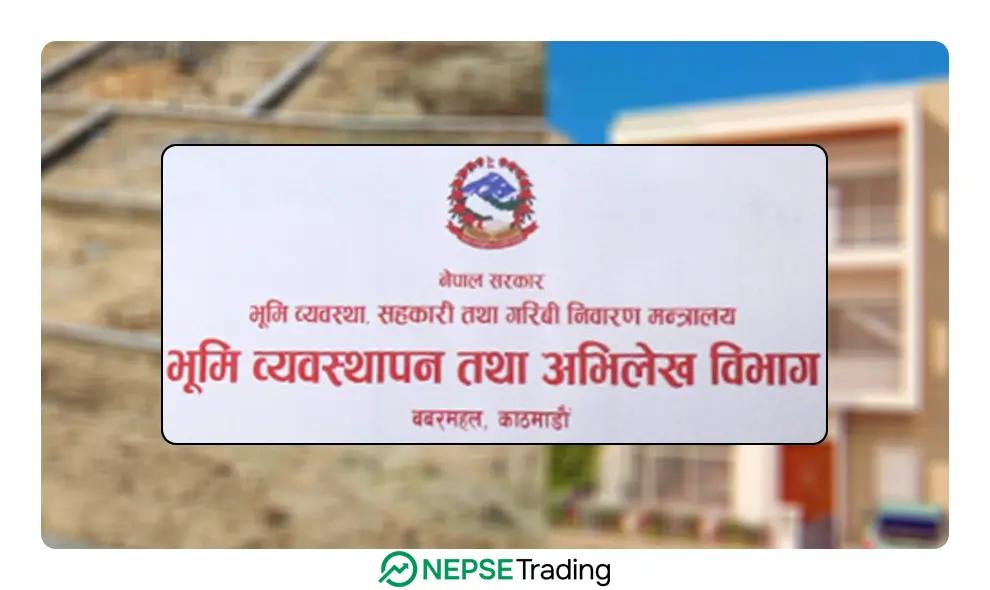By Dipesh Ghimire
Nepal’s Real Estate Market Cools Sharply in Shrawan

Nepal’s property market saw a decisive slowdown in Shrawan (mid-July to mid-August), with double-digit declines across most transaction categories at land revenue (Malpot) offices nationwide. Total land-and-housing service transactions fell to 104,218, down 18.07% from 127,206 a year earlier—signaling weaker demand and more cautious borrowing behavior.
Sales activity contracted markedly. The clearest proxy for buy–sell momentum—deed registrations (likhat parit)—dropped from 43,835 to 31,621, a steep 27.86% decline. Ownership transfers (nam sari) slipped 21.07% (from 4,162 to 3,285), while record amendments plunged 45.88% (from 11,156 to 6,038). Hal Sabik (old record updates) also retreated 23.03% (from 3,303 to 2,313). In short: fewer sales, fewer title changes, fewer ancillary updates.
Credit behavior points to deleveraging. Mortgages (rokka) totaled 25,426 in Shrawan, while releases (fukuwa) reached 26,462. A year earlier, mortgages were 29,659 and releases 29,075. The current pattern—more releases than new mortgages—suggests households and businesses are paying down debt rather than leveraging up. That aligns with tight liquidity and elevated borrowing costs, and it typically dampens near-term property demand.
The slowdown was broad-based but uneven across regions.
Major offices recorded sizable declines: Bhadrpur (Jhapa) (-43.94%), Chitwan (-41.68%), Gotikhel, Lalitpur (-44.90%), and Taulihawa, Kapilvastu (-44.26%). Other large centers also cooled: Inaruwa (-5.44%), Belbari (-15.14%), Bhaktapur (-7.34%), Lagankhel (-9.96%), Janakpurdham (-5.16%), Kalanki (-15.48%), Rajbiraj (-26.96%), Parsa (-29.24%), Rupandehi (-25.25%). In the Kathmandu Valley, Chabahil (-13.22%), Tokha (-17.57%), Manmaiju (-17.16%), Sankhu (-14.05%), and Dillibazar (-7.08%) all registered declines. Kavrepalanchok saw total transactions down 22.44%, with deed registrations down nearly 47%—a particularly sharp contraction.
Pockets of growth exist—but are not sales-led. Some offices—Achham, Gaushala (Mahottari), Ghartigaun (Rolpa), Dolpa, Tanahun, Darchula, Bardibas (Mahottari), Belauri (Kanchanpur), Waling (Syangja), Humla, Bhojpur, Khijifalante, and Sankrantibazar—reported higher overall counts. However, the increases largely reflect more mortgage/release processing rather than a resurgence in purchase transactions. That reinforces the deleveraging narrative rather than signaling a demand rebound.
What the data imply.
Demand side: Buyers are hesitant; fewer deeds and transfers indicate reduced appetite for property purchases—whether for end-use or speculation.
Credit side: With releases outpacing new mortgages, borrowers are lightening balance sheets—consistent with tighter financial conditions and risk-off sentiment.
Seasonality vs. structure: Shrawan overlaps the monsoon, a seasonally softer window for real estate. But the breadth and depth of the declines (especially in key hubs) point to structural softness, not just weather effects.
Likely drivers (inferred from the pattern):
Higher effective borrowing costs and conservative bank underwriting suppress loan demand.
Liquidity discipline in the financial system curbs aggressive mortgage growth.
Income and cash-flow caution among households and SMEs pushes them to retire debt rather than expand it.
Policy and tax uncertainty around property can chill speculative turnover.
Sectoral and fiscal knock-ons.
Banking: Slower mortgage origination and a tilt toward repayments dampen credit growth and fee income from loan processing.
Construction & materials: Fewer deed registrations today usually translate into weaker downstream demand for building materials, fit-outs, brokerage, legal, and ancillary services in coming months.
Government revenue: Property registration is a material local and central revenue stream; sustained weakness could soften fiscal inflows from fees, duties, and capital-gains.
How to read the “mortgage > release” flip.
When releases exceed new mortgages, two things are typically happening: (a) borrowers with capacity are prepaying to avoid interest costs; (b) marginal borrowers are not qualifying or not applying for fresh loans. Both reduce transaction churn and cool prices/volumes, especially in segments that rely on leverage.
Risks and potential stabilizers ahead.
If funding conditions remain tight, sales volumes and registrations may stay subdued, pressuring prices in illiquid segments.
If deposit and base lending rates ease and liquidity improves, Shrawan could mark a cyclical trough, with activity picking up into the festival season (Dashain-Tihar).
Watch: lending rate trends, interbank liquidity, bank base rates, and any policy/tax adjustments on land and housing that could unlock transactions.
Data and methodology notes.
These figures reflect services processed at Malpot offices during Shrawan and include multiple categories (deeds, transfers, amendments, hal sabik, mortgages, releases). They capture administrative activity, which is a close—though not perfect—proxy for underlying market demand. Month-to-month readings can be noisy; the year-on-year Shrawan comparison helps control for seasonality, but confirmation in Bhadra and Asoj will be important to separate seasonal softness from a prolonged downtrend.









